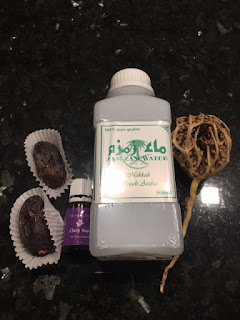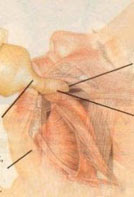Below is my Gentle Caesarian Birth Story. Hope it benefits all InshaAllah.
This was my 4th Birth, Alhamdulillah.
1st & 2nd Birth: Medicated SVD (normal birth). I was on Pitocin to augment labour & also Pethidine for pain relief (2008 & 2011)
3rd Birth: Drug Free All Natural Waterbirth (2014)
It was an uneventful pregnancy this time around, Alhamdulillah. Well, uneventful until the last minute😬
At 35 weeks appointment, doctor said my baby was already engaged🤗 orang kita sebut "baby dah turun". And also in cephalic position (head down). so just waiting for time.
At 37 weeks appointment, blood pressure not so pretty. Advised for diet control (less salt) & home BP monitoring. Fyi, I had a history of Pregnancy Induced Hypertension with my 2nd pregnancy, which ended up in spontaneous preterm labour at 36weeks😅 With home monitoring, BP still wasnt so pretty but wasnt that bad..especially in the evenings. Probably due to dehydration/tired since its the fasting month & I am fasting? We continued to patiently monitor..
Another issue I had this time around was premature contractions. It started eversince I entered 3rd trimester (around 28 weeks) so I had to be on tocolytics (to reduce the contractions). Most of the nights, I could not sleep at all because of the intense contractions & back pain.
Time to time, I did belly dancing to reduce the discomfort. It really helped especially for the backache & pelvic pressure.
Anyways, back to the birth story. At 38 weeks on dot, I couldnt stand the contractions & noticed some leaking. It wasnt all that painful until you feel like dying😅 but it was pretty unbearable until I couldnt do much anymore. And I had some liquor leaking & show which started around 1pm 13.06.17.
Rested at home, tried walking around until around midnight. Pestered hubby to take me to hospital then..brought all the essentials (gym ball, essential oils, bunga akar fatimah, dates, air zam-zam etc).
Checked in into the same labour suite as my previous birth, had a sense of familiarity already😊
On assessment, contractions 1 in 5, moderate intensity, cervix not favourable, os not open.
Ok...so decided to wait until tomorrow morning..
A bit frustrated that os wasnt open yet😔
However, doctor asked to be admitted in view of leaking liquor & regular contractions.
14.06.17 (Wednesday)
11am: Doctor came to review. Contractions getting intense but still no os opening. I was so exhausted from the surges..in view of leaking liquor for almost 24hours & me being exhausted of surges, we decided to augment the labour using prostin..
6pm: Still no progress😓 contractions more intense. 2nd prostin inserted. Rested, walked, ate, showered, squats using gym ball, hip rotations using gymball etc..
15.06.17 (Thursday)
11am: Os only 1cm. Contractions intensifying. I didnt take any painkillers just yet..hoping labor would progress soon.. 3rd prostin in..
Cried to myself feeling so demotivated & exhausted at that point.. felt that I did my best to keep the pregnancy as healthy as possible.. ate well, exercised etc.. wondering why it was sooo difficult this time around.. back pain unberable.. still continued to walk, exercise, stretch, eat etc
6pm: Os 2 cm. Surges 1 in 3. Doctor came to review. It was these options
1st: take a "home leave". Go out or back home for a while and come back later to monitor progress.
2nd: induce labour. Start pitocin & rupture waterbag.
3rd: have a caesarian section.
8pm: Me & hubby did lots of thinking. And prayed. After considering many factors like..
Why we didnt opt for induction of labour? Doctor warned us of the dangers & risks..hyperstimulation, risk of fetal bradycardia (low heart beat)..& considering the fact that, if vaginal birth were to happened, we strongly felt that it would have already happened naturally or with just prostin augmentation.. how come was so prolonged this time around? And our intuition felt something wasnt right.. plus my BP was on the rising trend.. and prolong leaking liquor wasnt so good as well, risks for infection..hence, we opted for a caesarian.. it was a tough decision to make, but Alhamdulillah we finally came to a conclusion..
So we called the doctor and agreed for a caesarian that night itself.. i expressed some breastmilk before going into the operation theatre..and requested for hubby to have the honour of skin to skin with baby right after birth..
11pm: At the OT, it was time for epidural. MashaAllah, only God knows I am sooo scared of needles puncturing me, what more an epidural!!! Its like my worse nightmare. But Dr Idora was the sweetest, she hugged me tight when the anaesthetic doctor gave me an epidural knowing I was super scared of it.. she was really a gem, I cannot forget that moment, I was so touched..
11.40pm: Surgery started. Hubby witnessed it together with me, he was just beside me the whole way, comforting me, Alhamdulillah.
11.46pm: Saw the amniotic fluid being sucked out! Big smile on my face. I knew baby was coming!!! Soon, I heard a cry & saw my baby. MashaAllah tears of joy & relief rolling down my cheeks. I was given the chance to hold his little hands & did some cheek to cheek skin touch with him. Soon, hubby got the honour to clamp the cord. And off the two of them went to have some father & baby skin to skin time for two hours while I finished with surgery & was transferred to ward.
Baby was in occiput transverse position & had short cord. Probably that was the cause of prolonged labour🤔
Post op, I was paranoid for a while. I couldnt feel my legs! Yeah that was expected of an epidural but it was the worse feeling ever. My legs were as heavy as it can be & At that moment I realized.. how ungrateful I had been to God's blessings..
Honestly, this was an unexpected pregnancy, and I am not ashamed to admit that I was tired of raising my 3 kids, let alone thinking of raising a newborn..I was in denial most parts of the pregnancy even though I tried my best to eat well , exercise & stay positive..
All that was running through my mind NOW AFTER NOT BEING ABLE TO FEEL MY LEGS was how lucky I was to have been given good health all this while.. and I shouldnt be complaining at all of how tired I am raising kids..instead I should be thankful of this wonderful opportunity! My paranoia with my legs continues up until the ward, i kept asking when would I be able to feel my legs? The nurses were sweet comforting me, saying soon it will be ok.. and true enough, in a few hours time, I could already feel them, Alhamdulillah..
At the nursery, hubby did skin to skin & the nurses fed my son my expressed milk. MashaAllah, I was so happy he got skin to skin time with daddy! And we delayed bathing him until the next day, let all that beautiful vernix (whitish substance on the skin) stay & do it's magic.
When I was back in the ward, about 2 hours post birth, I got some skin to skin time & also started breastfeeding baby.
Alhamdulillah, it was a new amazing, humbling & eye opening experience for me😊 I have no regrets or remorse that I opted for a caesarian because I knew I tried my best to have a healthy pregnancy & natural birth.. & I understood the need for caesarian in this situation. And it was done so gently & respectful of our requests & consent.
I hope sharing this birth story benefits other families InshaAllah❤️I am finally a lucky mother of four beautiful children❤️
























